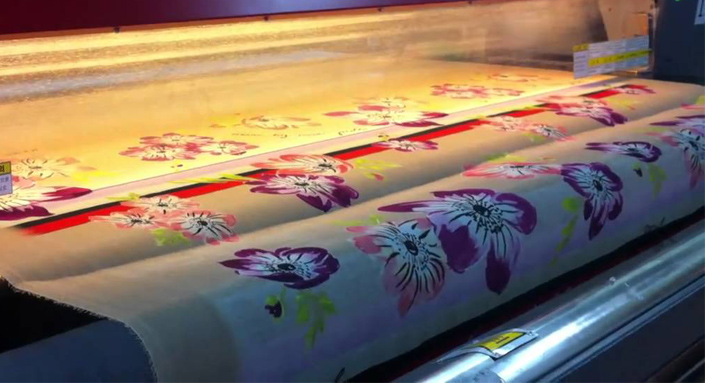
Source: Fibre2Fashion
Digital textile printing is all set to grow exponentially in the coming years driven by increasing penetration of this sector among Asian fabric printers, especially in textiles manufacturing hubs such as China, India and other Asian nations.
Textiles printing is not a new thing in the textiles industry; this process has existed for centuries and has witnessed a long transformation over centuries. Textiles printing is done with five major methods: block printing, roller printing, screen printing, heat transfer printing, and ink-jet or digital printing.
Block printing, which is also referred to as relief printing, is the oldest method of fabric printing. This method involves printing on to the fabric by the dye being pressed from a carved object, historically wood, copper but also rubber and now many other materials. Textiles printing substantially evolved during the 18th century with the invention of roller or cylinder printing capable of printing with high speed and quality compared to block printing using series of rollers, each of which engraved with the design and capable of even print six colours at a time.
Early 20th century laid the foundation for the modern textiles printing process with the introduction of the screen printing and rotary multicoloured screen printing during the mid-20th century. Commercialisation of the digital textile printing at the beginning of the 21st century completely revolutionised the textiles printing process.
Since its introduction, this technology has attracted attention of the industry from across the world and has captured almost 2 per cent of the market share of the 30 billion sq m fabrics printing industry from virtually nil in the past one decade. It is estimated that digitally printed fabrics output is expected to cross 1 billion sq m by 2017 and 2.5 billion sq m by 2020 growing at a CAGR of 28 per cent between 2015 and 2020. Asia-Pacific, which leads the global fabrics printing industry with nearly 65 per cent of the market share, represents nearly 25 per cent of the market in the digital textiles printing industry dominated by Europe which accounted for almost half the global output in 2015.
Globally, China dominates the fabrics printing market representing one-third of the overall fabrics printing market. However, Italy dominates the global digital textile printing market accounting for 25 per cent of the market. The Como district in North Italy, famous for high-quality printing on silk across the world has led Italian market from the front and realised its benefits. Digital textile printing in this textiles printing hub has increased from 2 per cent in 2003 to 58 per cent in 2013 and is expected to reach more than 80 per cent by 2017. Companies in the region are investing heavily in digital textile printing machines to bring in creativity in order to curb the increasing competition from the Far East.
Digital textile printing significantly reduces the time to market from 6-8 weeks by traditional printing processes against 3-10 days by helping textiles printers to eliminate the unnecessary steps and reduce the time in order to stay competitive in the fast changing fashion cycle which has also reduced the average run lengths across all the regions.
Digital textile printing is also a more environment friendly process consuming less power and water and leaving minimal industrial waste and carbon dioxide emission as compared to the traditional printing process, which makes it an ideal choice for the replacement of the traditional printing process taking into consideration its environmental impacts.
